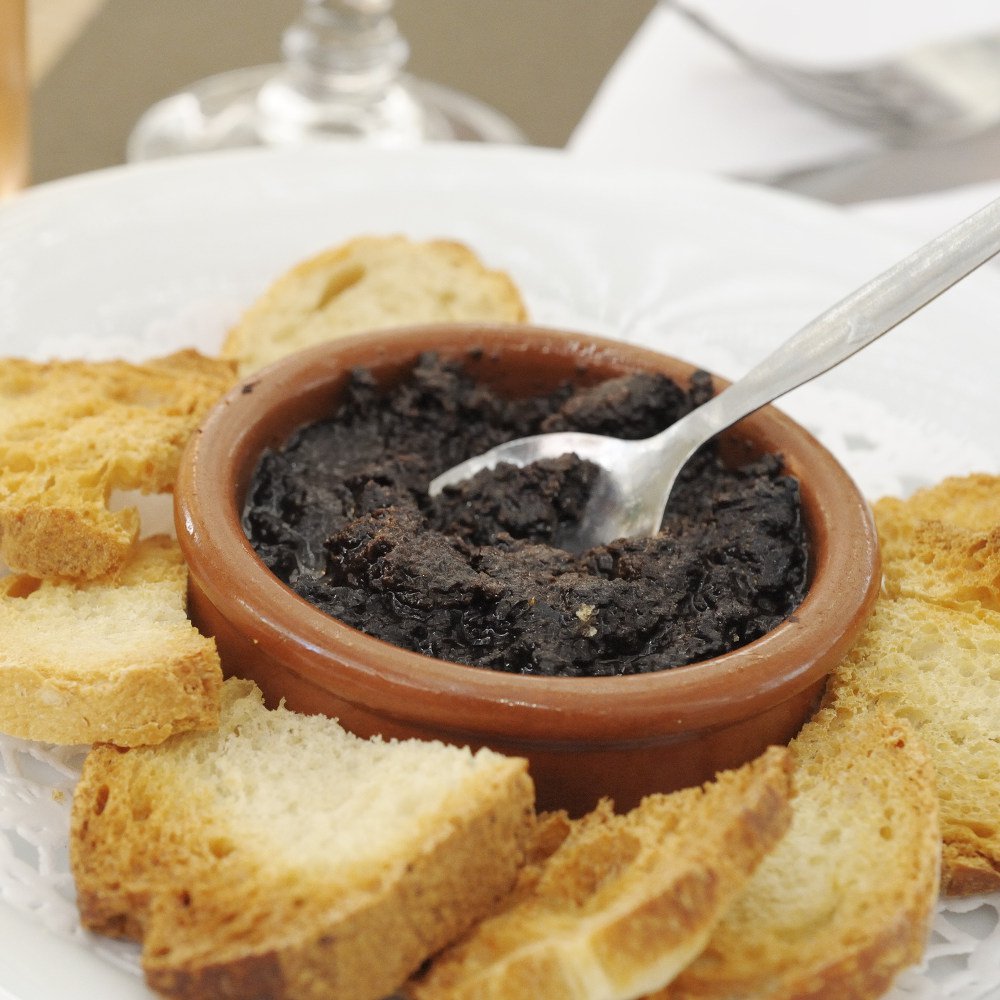Nutritional value of the tapenade
The tapenade consists of various ingredients that can significantly change its nutritional value. Nevertheless, we can estimate that for 100 grams of tapenade (on average 120 calories), 1 g of protein, 4 g of dietary fiber and 1.6 g of sodium are obtained. The 12.5 g of lipids present are generally monounsaturated fatty acids.
The tapenade is an excellent source of minerals
The tapenade is an excellent source of minerals . It is indeed rich in potassium with about 50 mg per 100 gram serving. Potassium is useful to fight against hypertension, to promote the transmission of nerve information and the contraction of muscles.
The tapenade also contains 20 mg of magnesium which leads to energy production and is also essential for stress management.
In addition, 14 mg of phosphorus are found in the tapenade and 36 mg of calcium . These two minerals are used in the composition of bones.
Finally, the tapenade has 1.5 mg of iron . The latter is essential for brain, immune, anti-infectious and endurance functions.
Tapenade, a food rich in unsaturated fatty acid
The tapenade is a mashed olives, it concentrates all the benefits of this fruit. Thus, this paste is extremely rich in monounsaturated fatty acids which represent about 75% of the lipids present in the olive and its oil . These fatty acids are known to lower the risk of developing a cardiovascular pathology, especially because they lower the level of bad cholesterol (LDL) in the blood. In parallel, they can increase the level of good cholesterol (HDL). These two actions combine to protect against atherosclerosis, due to its accumulation.
The tapenade is antioxidant
The tapenade is also antioxidant , that is to say, it protects the cells from free radicals, these molecules that damage them and are responsible for a certain number of pathologies related to the aging of tissues (including degenerative pathologies, heart disease and some cancers). The olive oil present in the tapenade is for many.
However, it is known that black olives (and therefore black tapenade) contain more antioxidant phenolic compounds than green (up to four times more). On the other hand, both green and black have much larger amounts of hydroxytyrosol (a phenol) than olive oil.
The tapenade consists of various ingredients that can significantly change its nutritional value. Nevertheless, we can estimate that for 100 grams of tapenade (on average 120 calories), 1 g of protein, 4 g of dietary fiber and 1.6 g of sodium are obtained. The 12.5 g of lipids present are generally monounsaturated fatty acids.
The tapenade is an excellent source of minerals
The tapenade is an excellent source of minerals . It is indeed rich in potassium with about 50 mg per 100 gram serving. Potassium is useful to fight against hypertension, to promote the transmission of nerve information and the contraction of muscles.
The tapenade also contains 20 mg of magnesium which leads to energy production and is also essential for stress management.
In addition, 14 mg of phosphorus are found in the tapenade and 36 mg of calcium . These two minerals are used in the composition of bones.
Finally, the tapenade has 1.5 mg of iron . The latter is essential for brain, immune, anti-infectious and endurance functions.
Tapenade, a food rich in unsaturated fatty acid
The tapenade is a mashed olives, it concentrates all the benefits of this fruit. Thus, this paste is extremely rich in monounsaturated fatty acids which represent about 75% of the lipids present in the olive and its oil . These fatty acids are known to lower the risk of developing a cardiovascular pathology, especially because they lower the level of bad cholesterol (LDL) in the blood. In parallel, they can increase the level of good cholesterol (HDL). These two actions combine to protect against atherosclerosis, due to its accumulation.
The tapenade is antioxidant
The tapenade is also antioxidant , that is to say, it protects the cells from free radicals, these molecules that damage them and are responsible for a certain number of pathologies related to the aging of tissues (including degenerative pathologies, heart disease and some cancers). The olive oil present in the tapenade is for many.
However, it is known that black olives (and therefore black tapenade) contain more antioxidant phenolic compounds than green (up to four times more). On the other hand, both green and black have much larger amounts of hydroxytyrosol (a phenol) than olive oil.


